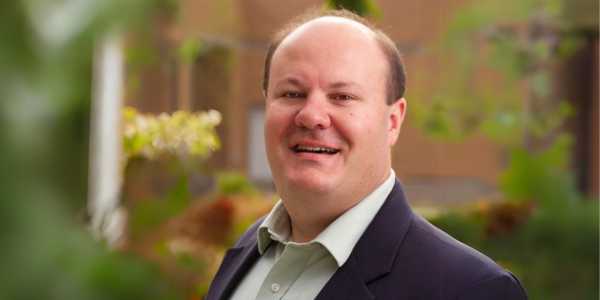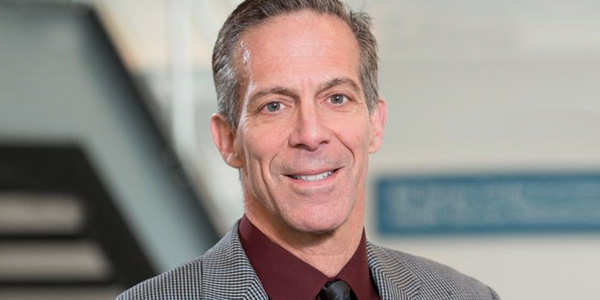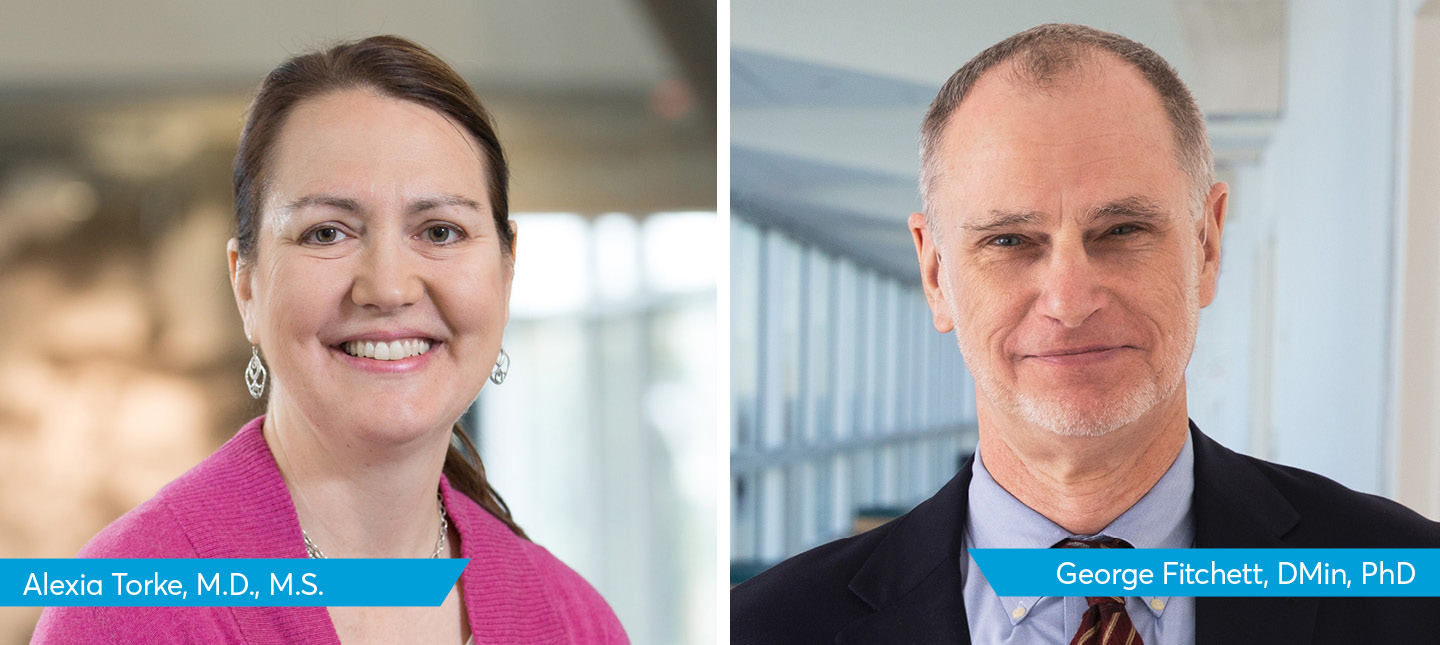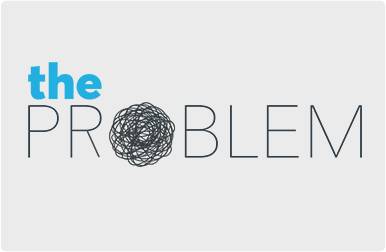Transcript
Mindi Winnie:
My mom always talks about going to doctor’s appointments and just how frustrated she would be with the doctor.
Phil Lofton:
What was it that was so frustrating about the doctors?
Mindi Winnie:
My mom would get so frustrated because the doctor, he would be talking to my grandmother, you know, and, and when she wouldn’t respond, I mean he was just kind of just, I don’t know if abrasive is the right word, but I mean it was just like my grandma was the only one that could provide any answers. Like, he just didn’t want to listen to my mom and my mom would just be, I mean, there was, I don’t know if she did, but she was like, okay, then we’re just gonna sit here all freaking day then because she can’t communicate, like you’re trying to communicate with a person, they can’t talk. You know?
Phil Lofton:
The American healthcare system comprises numerous professions. Doctors treat patients, write prescriptions, and manage care. Social workers help patients find resources. Pharmacists help fill their prescriptions. Counselors discuss patients’ lives. Billing staff process payments. And the list goes on.
That team of practitioners, though, can often fall out of communication with each other. Depending on the health system, a given patient’s care might be well-coordinated, or it might fall more on the patient or caregiver themselves to be the source of information related to care – remembering exhaustive lists of medications, testing treatment options, results to report to doctors, and more. It’s stressful for the patient, and the caregiver, and it can actually lead to worse health for both.
Today, we’ll learn about a specific model of care that can provide better outcomes for patients, caregivers and health systems themselves.
Welcome to The Problem. I’m your host, Phil Lofton.
[THEME]
Alzheimer’s disease has an enormous footprint in the United States. Remember, there are almost 6 million American adults living with Alzheimer’s today, and there are more than 16 million informal, unpaid caregivers who take care of them.
And while the cost of Alzheimer’s can’t possibly be completely quantified in terms of dollars, our conversation today will be focusing on the impact on health systems, so it’s important to mention another statistic. In 2019, the country is projected to spend $290 billion, that’s with a “B”, on Alzheimer’s.
By 2050, if no cure is found, that cost will rise to one TRILLION dollars a year.
There are a lot of factors that contribute to the massive cost of Alzheimer’s. Older adults with Alzheimer’s have twice as many hospital stays. They’re more prone to emergency department visits. And they have a variety of commonly co-occurring conditions such as kidney disease and diabetes that can also make life more expensive.
There are ways to control these costs. But oftentimes, older adults don’t have a care team working to help manage their holistic care. It’s usually managed by clinicians separately, and it’s up to the patient and their caregiver to create a plan of care for themselves, trying their best to navigate complicated medical systems, manage multiple prescriptions, and remember and reconcile medical advice from multiple practitioners.
And when that much responsibility falls to the patient and their caregiver, it can lead to avoidable doctor visits, adverse effects related to medication, and other maladies that could’ve been avoided if care had been more effectively managed and communicated across disciplines.
In Indianapolis, the Healthy Aging Brain Care at Eskenazi Health, or the HABC clinic, is working to make collaborative care model the standard in senior care.
It’s a model that’s been tested extensively by Regenstrief and Indiana University scientists, and it continues to be fine-tuned. Here’s Dr. Chris Callahan, the former and founding director of the Indiana University Center for Aging Research, with a quick explainer on collaborative care.
Chris Callahan:
Collaborative care is a team-based approach. And it recognizes that that 10 or 15 minutes that the patient spends in a provider’s office is an incredibly small amount of time compared to the 365 days a year that other people are spending with a person with dementia. And it also recognizes the fact that there are care providers both professional and family who have different skillsets and in many of our models of care.
Now we’re trying to emphasize interprofessional training and that interprofessional training is to teach people this is the skillset of the social worker. This is the skillset of the MD. This is the skillset of the nurse, the pharmacist, the occupational therapist, whoever might be involved. But as you do that, one of the things that happens is you begin to raise questions about accountability. So, can we effectively communicate and hold accountable the person on the team whose role we thought was being filled by this particular person? And it’s no different than any other team. If you picture your baseball, your soccer, your football team, we can’t have the quarterback just decide that he’s going to be a wide receiver and you can’t have the center midfield on your soccer team just decide she’s the goalie. And that takes a lot of communication.
And so this is what I mean by redesigning healthcare. You can get people to agree to this model, but have you put the systems in place that support them in that model? That’s the kind of research that we did, to begin to protocolize, put to protocol which of these members of the team had, which roles, how they should communicate and how they should document what they accomplished. We helped design the electronic medical record that would assist in that asynchronous communication cause they’re often not going to be in the same room at the same time. And where we’re struggling now and we continue to do research is how do you pay for that model of care? What are the payment models and who gets paid what and what’s the right combination? And then, what our team is particularly interested in is how do you take it to scale? So, we have such a clinic at the Sandra Eskenazi Center for Brain Care Innovation, but what would it take for it to be available to everyone?
Phil Lofton:
Collaborative care, like Dr. Callahan says, is a team-based approach. Commonly, that team consists of a doctor, nurses, social workers, and a care-coordinator, who helps develop care plans and track them to make sure they’re followed and effective. To learn more about the unique parts of the HABC team and what sets it apart, listen to our special case study episode on the HABC, available now.
At a glance, though, the collaborative care is a model that makes sure that care is properly coordinated across disciplines. Especially when dementia is involved, that coordination is crucial to prevent any gaps in care due to gaps in patient memory.
What’s more, in the HABC model, care isn’t just conducted in the clinic, but also by community health workers who visit the patient in their home. This helps the whole collaborative team have a better understanding of the patient’s whole health.
There’s also a strong emphasis on care for the family or loved one functioning as a caregiver, as well. Here’s Regenstrief Scientist and founding Director of the Sandra Eskenazi Center for Brain Care Innovation, Dr. Malaz Boustani, who has helped show the power of collaborative care in his work over the last decade.
Malaz Boustani
As a scientist when we did our epidemiological study to understand where the suffering from Alzheimer disease was coming from, what we saw that actually there is a caregiver suffering more than the patient. And actually as a matter of fact, the life expectancy of a family member caring for their loved one with Alzheimer disease is shorter than a family member who taking care of somebody else and for sure much, much shorter than family member who doesn’t have a loved one with a disability. So that’s one.
A second one we found out from our clinical trials, and other people prior to our clinical trial that actually if you help the family, if you provide them with the problem-solving strategy, coaching on problem-solving strategy, if you provide them with community resources, if you provide them with navigation capability and if you provide them with the method and processes to reduce their own stress, that actually improve their overall burden, but more specifically reduces the suffering of their loved one from Alzheimer disease. So, it was a scientifically valid focus on the caregiver.
Phil Lofton:
In Dr. Boustani’s research and clinical practice, he’s shown Collaborative Care to be incredibly effective at reducing harms of Alzheimer’s to both the patient and the caregiver, as well as creating cost savings for health systems.
Malaz Boustani:
People think there is nothing you can do for Alzheimer’s disease. That is absolutely incorrect. Absolutely. There’s a lot of things we do with Alzheimer disease more than what we do for diabetes and hypertension. All right? I can literally, with the collaborative care model, reduce, at least take away $3,500 per member per year. You know, I can reduce your inappropriate hospitalization by half. I can almost reduce your caregiver burden by 90% within 12 months. I can reduce the behavior and psychological burden, some by 90% within 12 months. So, there’s a lot of thing we can do. The problem is that is not what the message is received by our family members and patients. They think Alzheimer disease is not curable. Diabetes is not curable. Hypertension is not curable. Coronary heart diseases are not curable. These are all chronic diseases. You can live with them. But they don’t have this negative stigma like Alzheimer disease. So that’s why we need to improve that awareness and, and switch it from negative message to the reality the fact of positive thing.
The second one is we need to make sure there is an actual policy of alternative payment model that will make it easy for people like us at Eskenazi to do the right thing, not depend on the philanthropist and other things, to deliver what’s supposed to be the right thing to do. And finally, we have to empower the caregiver and the patient and such market demand by creating these health savings account or expanding the scope of health saving account to cover for the caregiver-based intervention and have the caregiver and the patient in charge of using that housing saving account, not a primary care doctor or a physician who doesn’t even have two minutes to build empathy with patients and family. So that’s kind of our current strategy. It’s a tough one. But man, it’s going to be the hill that I’ll die for proudly.
Phil Lofton:
But so far, collaborative care models haven’t really been widely adopted. When I asked Dr. Boustani about it he told me that it’s largely because most people don’t know about it.
Malaz Boustani:
So for us right now, the next step is how can we create a market demand for this collaborative care model. And I think policy is a good starting point. But it’s not going to be enough. So, I think, there’s two strategies to create that market demand, increase awareness on a community level, a grassroots level. And we are teaming up with the AARP and Us Against Alzheimer’s disease to actually, destigmatize brain health and make people think that, you know, brain health is everything below the neck. Technically we can do a lot of transplants but we can’t transfer your brain.
So increase awareness. that’s, that’s a huge one. And the second one is creating alternative payment models, through policy that will create a market also demand, on that piece.
We think what we also need besides increasing awareness and creating policy of alternative payment models is actually to empower the caregivers and the patients, to be the one who has the financial power to choose a healthcare delivery system that we’ll be able to provide the collaborative care model. And we think we can do that by expanding the health saving account capability to include into that health saving account to use that health savings account to pay for caregiver coaching and caregiver-based intervention and directly to pay from that health savings when our account to the health care delivery system that will deliver the collaborative care model. So that’s our strategy. In order for us to do it, I have to create a coalition.
Phil Lofton:
If Medicare and Medicaid change their reimbursement models, collaborative care of a quality like that available in Indianapolis could be available across the nation.
Imagine a team of experts – a pharmacist, a social worker, doctors and more – meeting together with you and your loved one to discuss their care, to assess progress in health goals, and to clarify confusion with you. Right now, that’s not widespread, but if collaborative care is expanded, it could be.
In order for it to happen, Dr. Boustani says we simply need to let patients and caregivers know the benefits and the options in care.
This search for a better care model for some of the most vulnerable patients comes from a deeply personal place for Dr. Boustani. During our talk, he shared his story with me.
Malaz Boustani:
As a resident in Mount Sinai in Cleveland, when I was taking care of a patient who was transferred to our hospital from the nursing home. And that person suffered from Alzheimer’s disease and dementia in particular. And we didn’t take care of him at all in the hospital. I saw suffering in his eyes. I saw suffering in his family and I think we made his life worse actually.
He came over to the hospital and, and somehow I imagined myself being in his shoes, and I got really scared. and I felt, “It’s not right. It’s terrifying and, and I need to do it–not just for this person, in particular, but also for me and my family and others.” So, that that was a terrifying experience and I didn’t help him at that time. I didn’t know. Most likely I caused more harm than benefit for him. But, his face, his emotion and laying in the bed surrounded by his family members, got stuck in my head and, think that was the main driver, that led me, you know, focus on making sure that experience won’t be replicated to other people.
Phil Lofton:
Can you tell me about like some experiences that you’ve had where you’ve had kind of an inverse of that? How have you used this to fuel better patient interactions? What do some good patient interactions and patient family interactions that you’ve had look like?
Malaz Boustani:
You know, almost like–when was it? ’96, ’97, So almost, 10 years later, more maybe 11, 12 years later, I had the opportunity to, help and coordinate the care of another family living with Alzheimer disease. And that family, I was with them almost the entire journey. So, I was there from the time we made the diagnoses of Alzheimer disease and dementia to the time that the patient passed away. And if I can share with you the video clip in my head from the last hours.
So, I was in the patient’s home. the patient was laying down sleep, very peaceful. The wife, was there. The son and the daughter were there. Grandkids were there. And there was music in the background. It was Italian music and people were laughing and the hospice nurse was there. And 24 hours later, I received a call from the wife, the son and the daughter altogether, thanking me that this was a beautiful transition for their loved one.
And what they told me was “Thank you for keeping our loved one at home for longer. Thank you for taking care of our mom. and, and thank you for, helping us, navigate the journey with our dad.” and so that was, that was one of the proudest moments in my career.
And, simultaneously almost another decade passed, and I could not replicate that experience to my father-in-law. And, the only difference between the experience that I was able to provide a great experience, and experience that I could not provide to my father-in-law, that my father-in-law was not living in Indianapolis and was not receiving care at the Sandra Eskenazi Center for Brain Care Innovation. And that was very, very disappointing because that told me that if I can’t crack the scalability and sustainability of providing great Alzheimer disease care, then that’s not fair. And, so since then, I shifted a lot of my efforts in research activity into this concept of developing a scalable, sustainable, evidence-based, effective Alzheimer Disease Care Program that can be provided to everyone, not even in the United State and even across the United States.
Phil Lofton:
Collaborative care isn’t a cure for dementia or Alzheimer’s, but it can ease the burden on patients and families. It can prevent moments of crisis. It can improve quality of care. It can keep caregivers healthier, longer, and it can keep older adults in their homes, longer.
Next time, we’ll dive into the struggles that caregivers face.
Join us then, on The Problem.
Music for this episode was from AA Alto, Everlone, Jahzar, and Monplasair. Our theme, and additional musical cues were written and performed, as always, by Fill in the Blank.
The Problem is produced at studio 134 in the Regenstrief Institute in Indianapolis, Indiana, where we connect and innovate to provide better care and better health. Learn more about our work and how you can get involved at Regenstrief.org, and see bonus content from this episode, including sources, pictures and more, at Regenstrief.org theproblem.
The Problem is written, hosted, edited and produced by me, Phil Lofton, with additional editing by Andi Anibal, John Erickson, and Jen Walker. Web design and graphics are by Andi Anibal, and social media marketing is by Jen Walker.
Special thanks to Mindi Winnie, this season’s caregiver storyteller.
Bonus Materials
Dr. Boustani shares tips for improving caregiver health, a key component of collaborative care.
https://www.youtube.com/watch?v=yWqB_a_YrAE&t=4s








